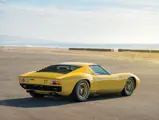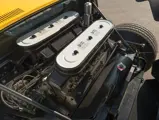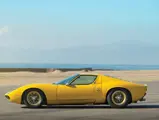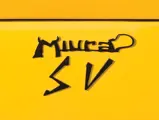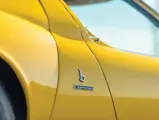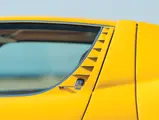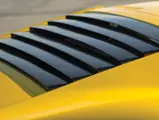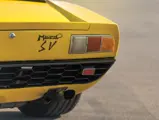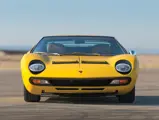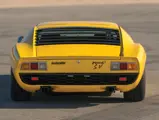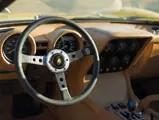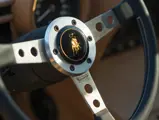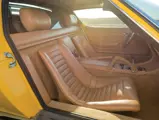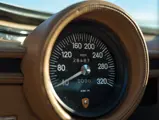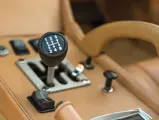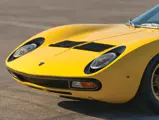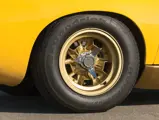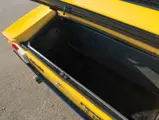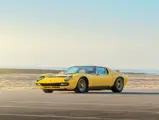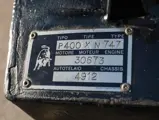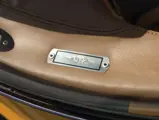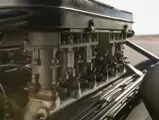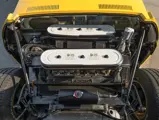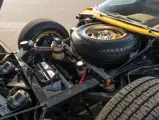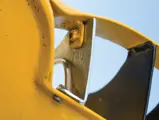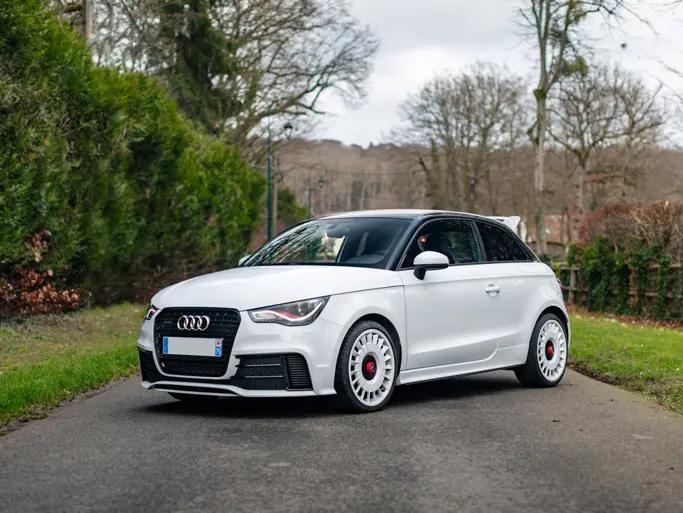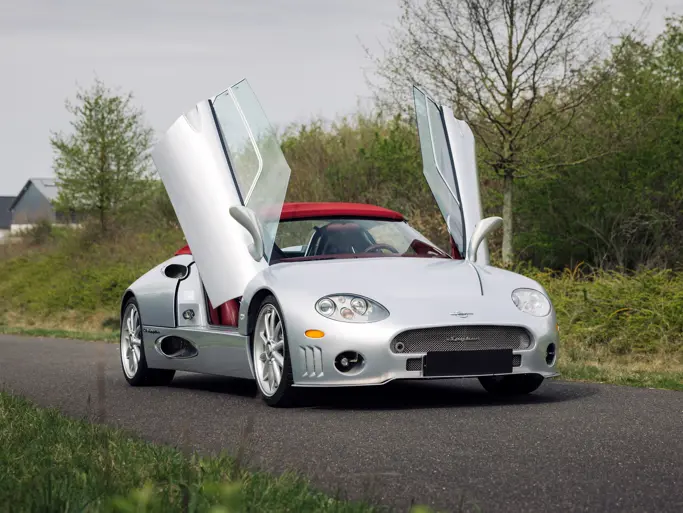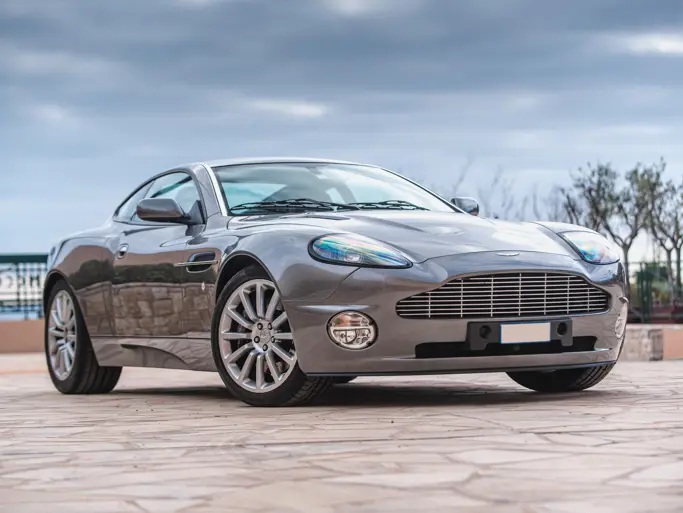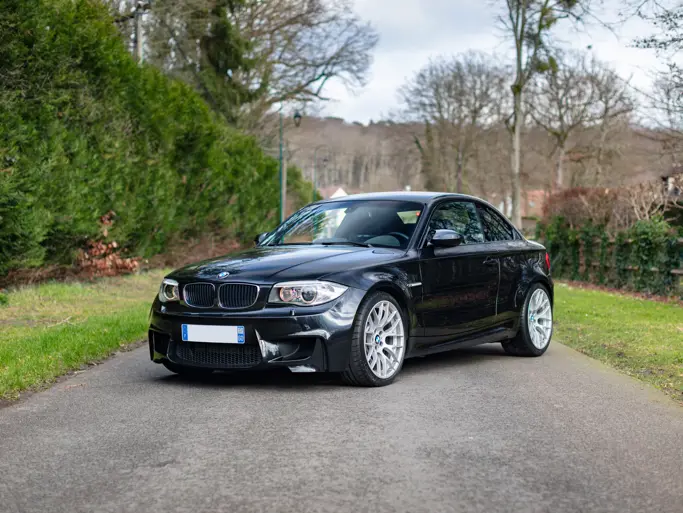Arizona 2016
1971 Lamborghini Miura P400 SV by Bertone
{{lr.item.text}}
$2,000,000 USD | Sold
 | Phoenix, Arizona
| Phoenix, Arizona
{{internetCurrentBid}}
{{internetTimeLeft}}

- The only Miura SV originally finished in Bleu Medio
- One of five single-sump SVs sold new to the U.S. and equipped with air conditioning
- Recent mechanical service; an excellent driver’s Miura
- Original matching-numbers engine
385 bhp, 3,929 cc DOHC transverse mid-mounted alloy V-12 engine with four Weber twin-choke carburetors, five-speed manual transmission, independent front and rear suspension with A-arms, coil springs with tubular shocks, and anti-roll bars, and four-wheel hydraulic disc brakes. Wheelbase: 98.42 in.
Before the introduction of the Lamborghini Miura at the 1966 Geneva Salon, the term “supercar” simply did not exist. The Miura heralded the beginning of a new age in automotive history, and visually, it looked like nothing else on the road. The designer, Marcello Gandini, was just 27 years old when he penned its stunning design for Bertone, and his work encapsulated the youthful spirit of the age and the power lying behind the bodywork.
The Miura’s design was indebted to its engine placement, with the V-12 mounted transversely directly behind the passenger compartment. Not only did this allow for a highly attractive silhouette, but it also gave the Miura incredible balance and weight distribution. Like many supercars that have followed in its footsteps, the Miura evolved over time, and the last iteration, the P400 SV, was the most developed and potent. The suspension was also revised slightly to help reduce the “front-end lightness” that characterized the handling of earlier cars, and the rear bodywork was widened for a more aggressive stance. The engine was also addressed, and the SV was fitted with larger carburetors and featured different cam timing, helping to make the SV more user-friendly at lower RPMs.
Needless to say, performance remained incredible, and the SV could outrun just about everything on the road when new. Producing a total of 385 horsepower, the SV could sprint from 0–60 mph in just 5.8 seconds. On a wide open stretch of road, the Miura could reach a top speed of 180 mph.
Completed on October 29, 1971, this Miura SV, chassis number 4912, was originally finished in Bleu Medio over a Pelle Bleu interior and was shipped new to the United States through Modena Car U.S.A. Notably, it was the only Miura SV to be finished in that color according to Joe Sackey’s definitive tome, The Lamborghini Miura Bible. Furthermore, it is one of eleven single-sump Miura SVs to be fitted from new by the factory with optional air conditioning and one of just five examples equipped as such delivered to the United States. Chassis 4912 resided in Texas as of 1977 under the ownership of Pedro A. Rubio but had left his ownership by 1979. It is believed that the car remained in the United States until at least 1992. At that time, the car was imported from the United States to Japan by the Tokyo Pipe Co. Ltd.
The car remained in Japan for the next 20 years, and during this time, it remained largely in static storage. By 2011, it was sold to a Mr. Yamaguchi of Tokyo, who sold it to its current custodian. The car has only recently arrived back stateside and is said to be in wonderful driving condition. Currently finished in Giallo Fly over Beige as refinished during an older restoration, the car has received a recent mechanical service to bring it up to superb running and driving condition. Following a test drive, an RM Sotheby’s specialist commented that the car makes great power and has very responsive steering. Driving on the roads of Los Angeles, he further commented that “it’s hard to get looks driving around LA, but a Miura continues to turn heads!”
Without the Miura, it can be argued that Lamborghini might not even exist as a company today. Its importance to the automotive world as a whole simply cannot be understated. Chassis number 4912 is an excellent driver’s Miura and would surely put a smile on the faces of any driver and passenger at speed. Furthermore, considering its incredible original specification, it would be a fantastic candidate for restoration and would surely attract lots of attention at concours events around the world.
Regardless, this is a Miura to be enjoyed and driven—quickly!


